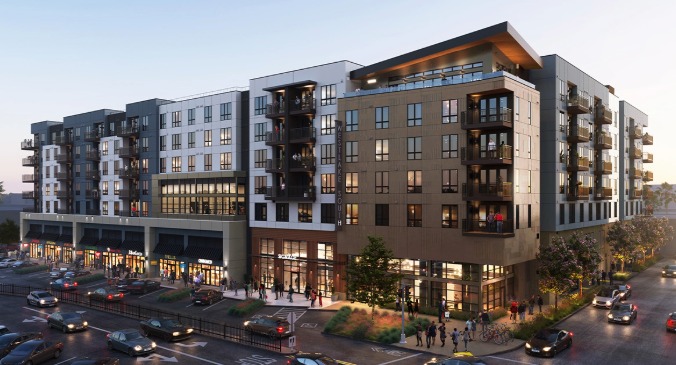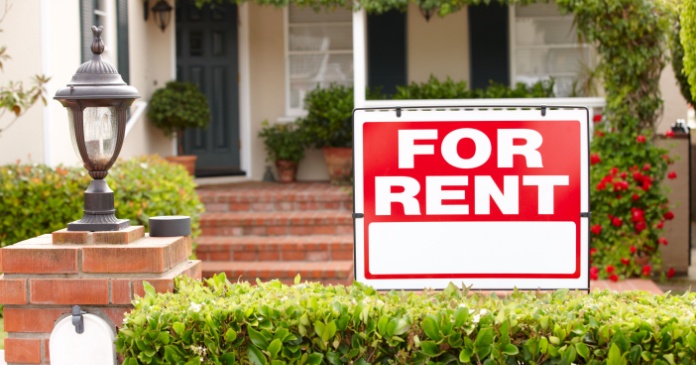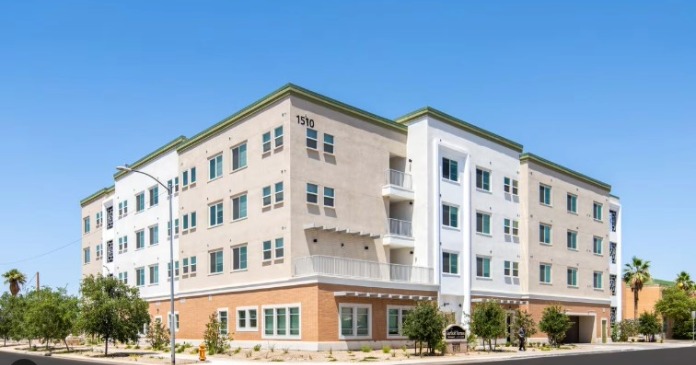Yield PRO TV presents NAHB Power Hitters. Host Linda Hoffman talks with Bob Landis, senior vice president of syndication for CAHEC.
Transcript: NAHB Power Hitters interview. Linda Hoffman with Bob Landis, recorded August 18, 2022
(music)
Linda Hoffman: America has a housing affordability crisis.
While this may seem like a new problem—it is as old as the New York City tenements of the 1800’s.
The Federal Government sought to address this problem with the 1986 introduction of the Low-Income Housing Tax Credit program, known as LIHTC. This program has been credited with the production of more than 3 million affordable housing units.
Like all government programs, using LIHTC to finance a project is complicated. Developers and investors seeking to use LIHTC are brought together and guided through the process by specialist firms who syndicate the financing. They are guides who navigate around the snares that may entrap the unwary in navigating the program’s complex regulations.
Today’s guest is just such an expert guide.
Bob Landis is SVP of syndication for Community Affordable Housing Equity Corporation headquartered in beautiful Raleigh, North Carolina. CAHEC is a nonprofit equity syndicator. Those of us of a certain age were seeped in the syndications of the 80s. Now that was a great time for housing. Bob it’s GREAT to have you on the show.
Bob Landis: Thank you for your invitation and interest. It’s a pleasure to speak with you today.
Linda Hoffman: Tell us a about yourself and CAHEC.
Bob Landis: Well, I’ve worked exclusively in the multifamily industry for my entire career. And that includes roles in almost all sectors of the apartment business throughout the U.S. That includes market rate, affordable, student housing. And I’ve worked in both, for both private and public owners. In recent years I’ve been working more in the affordable sector of the industry.
CAHEC is a nonprofit tax credit syndicator based in Raleigh, as you mentioned, and helps to develop and foster healthy neighborhoods by raising equity capital and investing in affordable rental housing and community revitalizations. CAHEC is one of the largest nonprofit equity syndicators in U.S. In our 30 years of existence, we have syndicated nearly 2.9 billion in investments in 12 states and the District of Columbia. And those states are primarily in the southeast and the middle Atlantic. And our portfolio now is over 36,000 units and 700 communities.
Linda Hoffman: Our viewers may not be familiar with what a syndicator does. Give us a short overview. What’s a typical syndication look like?
Bob Landis: Well, it’s a somewhat complex business, but I’ll try to put in simple terms. Tax credit syndicators basically bridge the gap, or in between investors who seek tax credits and developers who hold the tax credits but want equity financing for their projects. Investors are typically in this sector are banks and they will typically invest in a CAHEC-sponsored investment fund, which provides them with the tax credits that they can use against their federal corporate income tax bill.
A typical syndication involves federal tax credits that are allocated to the states on a formula based on population, and the state housing finance agency awards these credits to developers of affordable rental properties in a competitive process. After the credits are awarded, the developer will negotiate a sale of the credits to a syndicator in exchange for equity funding to help build or renovate a project. The syndicator typically puts together an investment fund that contains a number of projects—you know, 10, 15 or 20 projects—and they seek investment in the fund in exchange for the credits or other investment benefits. And then that flows up to the other investors that buy into that fund. That’s really it in a very simple way.
Linda Hoffman: Great explanation. LIHTC comes in two flavors: 4 percent credit and 9 percent credit. What is the difference and what situations would you use one over the other?
Bob Landis: Well, the big difference between the two types of credits is the fact that the 9 percent credit generates about 70 percent of the equity investment on the typical project. And 4 percent credits only generate about 30 percent of the equity that’s needed.
So, both credits are used for rehab and for new construction deals. Four percent involves tax-exempt bonds. As a result, it’s a much more complex financial transaction. Nice percent typically does not have any other federal subsidies. So, a key situation in which a developer may choose one credit versus another is the fact that the 9 percent credit is awarded competitively, as I mentioned earlier. In many states there could be three or more applications for each project that gets awarded. So, therefore as a developer you can spend years putting a deal together and if you don’t get an award, you’ve got a lot of dollars invested without getting return, so, there’s risk there, a lot of risk.
So, the higher subsidy amount provided by the 9 percent credits enhances the feasibility of the project. This allows greater leeway, typically for what we call income targeting, the size of the project, being able to locate projects in counties with really lower incomes. The 4 percent are not awarded competitively. They are basically only limited by the tax-exempt bonding authority available at the state level. So, sometimes it’s referred to as a non-competitive award.
The developer will automatically receive credits for a 4 percent deal. The 4 percent deal typically has to be larger in order to amortize all these bond costs have to be spread over, you know, all the units to finance the deal. So, I’d just sum it up—the 9 percent credits are really more versatile, but they’re scarce given the high demand for affordable housing and being able to develop those projects. The 4 percent deals are typically larger and located in communities with higher incomes that able to absorb a project that’s larger—say 100 or more units—so that’s, in essence, the difference between the two.
Linda Hoffman: So, when using the 4 percent tax credit, Bob, additional financing is required. What are your sources of these funds?
Bob Landis: Well, for starters the source has to be acceptable to the tax-exempt bond buyer. We are relying, basically, on the permanent financing on the property to pay off the bonds upon completion of the project. So, the developer will use a number of sources, which could include government insured financing like a HUD-type loan, maybe a 223(f) or (d)(4) mortgage program. The Rural Development Administration through the Department of Agriculture has loans for rural development projects that awarded tax credits, so there is financing there that’s government insured.
And then typically Freddie Mac and Fannie Mae are big players because their offering insured loan products that will also be acceptable to that tax exempt bond buyer. So, developers like, particularly, those last two Freddie and Fannie—they like those products because of the long amortization periods on the mortgages. They’re typically 35 years or even longer than that.
Linda Hoffman: CAHEC has a small number of non-LIHTC properties. Under what conditions do you get involved in those deals?
Bob Landis: Well, we get involved in non-LIHTC properties because it furthers our mission of fostering healthy neighborhoods and sustainable communities. Examples would be our New Markets Tax Credit Investments, which often include needed community facilities like YMCAs, healthcare and job creating facilities. Our investments in energy tax credits have included solar energy installations like in the state of New York, for example, historic tax credits or another type of tax credit that helps to preserve culturally significant buildings in the country future generations while adapting their use to housing or other uses that benefit the community.
So, those would be examples of like some non-LIHTC type projects we might get involved with.
Linda Hoffman: The Fed is aggressively raising interest rates. They may have raised them while we’ve been talking, you never know. Let’s just say they are expected to continue. How will this affect business over the next couple of years?
Bob Landis: Well, the most immediate and probably the longer term impact—it’s putting pressure on our developers by raising interest expense on construction and permanent financing. Because that’s a cost, right, in your pro forma and ultimately in your operating costs. So, these higher costs have to be offset either through additional equity funding, value engineering the deal, or deferring developer fees, or other tactics they might use to try to absorb some of these costs. Then you couple that with the well-publicized higher labor and materials cost that have been going on the last two years or so—it is really much harder to get deals done in this environment as the developers are kinda getting hit on all sides. It’s like a triple whammy: high labor, high construction materials, interest costs hitting them all at once.
It likely will result in fewer affordable units being delivered in the next few years just at the time when we need them the most and so that’s a problem.
Linda Hoffman: Congress just passed—effectively—a 15 percent minimum tax on corporations. Will this increase the demand for tax credits?
Bob Landis: Well, I think the impact of the minimum tax for, especially for large corporations, I believe it’s for organizations that have over a billion in revenue or there’s some kind of a huge number that’s involved. But the one thing, the one impact that might be there would be the pricing of credits may decrease as the investment may be less attractive to some large investors with income of more than a billion—assuming that the 15 percent minimum is net of tax credits. I think some of the rules are still a little uncertain at this point and I’m not a CPA, but we’re watching that with interest, obviously.
But putting that aside, many if not most of our investors, are more driven by the need to meet other federal requirements like the Community Reinvestment Act, which are requirements on banks, you know, to reinvest back in areas where they have bank deposits, you know, from their customers. Or Fannie and Freddie have a “duty to serve” requirement in their charters, which also influences, you know, where they’re investing some of their money and credit.
So, it isn’t always the economic bottom line that’s really being affected, it’s more, you know, this is more, more of a secondary impact. I would say that the minimum tax rate, it’s an important development, but it’s, I don’t see it as having like an earthshaking impact at this moment. I could be wrong later as things shake out. But right now, I think a lot of these investors are still looking at—they have to invest dollars in certain parts of the country in order to meet other federal requirements.
Linda Hoffman: CAHEC operates in the Southeast to the mid-Atlantic states. Mississippi is not—historically—a big market for you. Yet, over a third of your recent projects were there. Why?
Bob Landis: Well, that’s a really great question and I appreciate your homework on our activity. We carefully considered this expansion of our footprint as a result of an affordable preservation portfolio opportunity with some rural development properties in rural areas of Mississippi, with which we had a lot of experience elsewhere in the southeast particularly in Georgia and South Carolina and North Carolina. And the investor and developer that were involved with this portfolio, they were attracted to CAHEC because of our track record in this area. And all the deals were substantially renovated to continue providing quality affordable housing in rural areas of the state.
So, we, in essence, were brought a deal because of our experience in doing exactly that kind of portfolio. But that’s why we expanded. We decided it was a deal worth doing.
Linda Hoffman: Bob, thank you for providing clarity and for blazing a path forward for housing providers. Great show.
Bob Landis: Thank you very much. And I appreciate your interest in this sector, which doesn’t often get the publicity that some others do.
Linda Hoffman: There’s hope. With folks like Bob and CAHEC leading the way, we may someday see the light at the end of the affordability tunnel. Having the right guide may be the key to a successful outcome for all parties: investors, developers and residents.
Thank you for joining us. I’m Linda Hoffman. Look for our next exciting episode of NAHB Power Hitters.
(music, close, credits)
NAHB POWER HITTERS (logo)
In association with National Association of Home Builders (logo)
Building Homes, Enriching Communities, Changing Lives
Yield Pro TV (logo)
An Image Production
Host Linda Hoffman
Executive Producer Andrew Nicks
Research Michael Rudy
Guest selection and coordination Dean Schwancke
Production Image
Yield Pro TV is a production of Multihousing Professional magazine corporation and may not be reproduced or copied in whole or in part without the expressed permission of the publisher.
©2022 Yield Pro, LLC.












